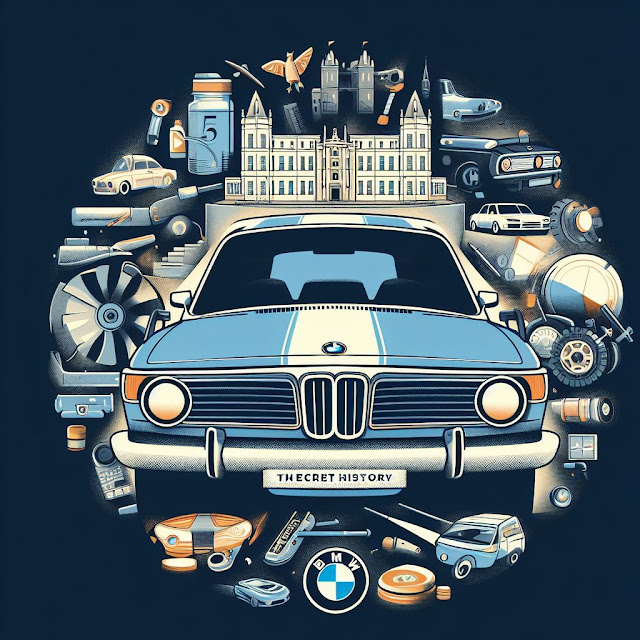BMW is one of the most famous and respected car brands in the world. The German automaker is known for its quality, performance, and luxury vehicles. But how much do you really know about BMW? In this blog post, we will reveal 5 interesting facts about BMW that nobody knows. These facts will surprise you and make you appreciate BMW even more.
1. BMW started as an aircraft engine manufacturer.
BMW stands for Bayerische Motoren Werke, which means Bavarian Motor Works. The company was founded in 1916 as a manufacturer of aircraft engines, which it produced from 1917 to 1918 and again from 1933 to 1945. During World War I and World War II, BMW supplied engines to the German air force, the Luftwaffe. Some of the most famous planes powered by BMW engines were the Focke-Wulf Fw 190 and the Messerschmitt Bf 109.
The BMW logo, which consists of a blue and white circle with the letters BMW on top, is often thought to represent a spinning propeller. However, this is a myth. The logo actually derives from the colors of the Bavarian flag and was first used in 1917.
2. BMW made its first motorcycle in 1923.
After the end of World War I, BMW was prohibited from producing aircraft engines by the Treaty of Versailles. To survive, the company shifted its focus to other products, such as railway brakes, farm equipment, and motorcycles.
The first BMW motorcycle was the R32, which was introduced in 1923 at the Berlin Motor Show. The R32 had a 486 cc air-cooled flat-twin engine, which was mounted transversely and connected to a shaft drive. The R32 set a world speed record of 216 km/h in 1937, which was not broken until 1951.
The flat-twin engine and the shaft drive became the signature features of BMW motorcycles, and are still used in some models today.
3. BMW bought the rights to manufacture the Austin Seven in 1928.
BMW entered the automobile business in 1928 by purchasing the Fahrzeugfabrik Eisenach, a German car company that had the rights to manufacture the Austin Seven under the name Dixi. The Austin Seven was a small and affordable car that was designed by the British Austin Motor Company in 1922.
The first BMW car was the 3/15, which was essentially a rebadged Dixi. The 3/15 had a 747 cc four-cylinder engine that produced 15 horsepower and could reach a top speed of 75 km/h. The 3/15 was produced from 1929 to 1932 and was replaced by the BMW 3/20, which was the first car designed entirely by BMW.
4. BMW almost went bankrupt in 1959.
After World War II, BMW was in a difficult situation. The company's factories were damaged or destroyed by the Allied bombing, and its car production was banned by the Allies until 1952. BMW tried to revive its business by making bicycles, kitchen appliances, and cheap cars, but none of these products were successful.
By 1959, BMW was on the verge of bankruptcy, and its managers were planning to sell the company to Daimler-Benz, the owner of Mercedes-Benz. However, Herbert Quandt, a German industrialist who owned a minority stake in BMW, decided to increase his share and take control of the company. He also invested in new models and technologies, such as the BMW 700, the BMW New Class, and the BMW 02 Series.
Thanks to Quandt's vision and leadership, BMW was able to recover from its financial crisis and become a profitable and prestigious car brand.
5. BMW owns Rolls-Royce and Mini.
BMW is not only a car manufacturer, but also a car owner. The company owns two other famous car brands: Rolls-Royce and Mini.
BMW acquired the rights to the Rolls-Royce name and logo in 1998, after a bidding war with Volkswagen. Volkswagen had bought Rolls-Royce Motors, which was the car division of the British Rolls-Royce plc, but did not secure the rights to the brand. BMW, which had supplied engines to Rolls-Royce Motors since 1998, made a deal with Rolls-Royce plc and bought the rights for £40 million. BMW then launched a new Rolls-Royce car company in 2003 and built a new factory in Goodwood, England.
BMW also bought the Rover Group in 1994, which included the Mini brand. However, BMW sold most of the Rover Group in 2000, after losing billions of pounds. BMW kept the Mini brand and relaunched it in 2001 with a new design and a new range of models. The new Mini was a huge success and became one of the most popular small cars in the world.
Conclusion
BMW is a fascinating company with a rich and diverse history. From aircraft engines to motorcycles, from small cars to luxury cars, from bankruptcy to success, BMW has seen it all. The company has also acquired and revived other iconic car brands, such as Rolls-Royce and Mini. BMW is truly a legend in the automotive industry and a source of inspiration for many car enthusiasts.


Comments
Post a Comment